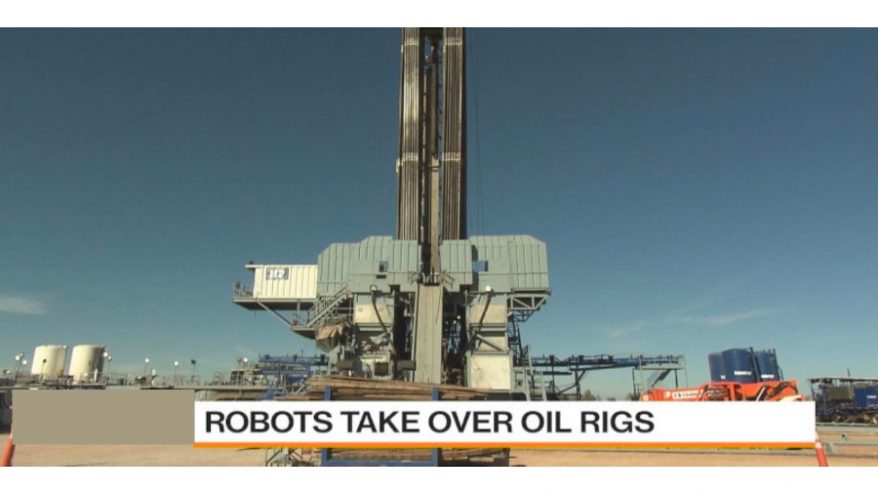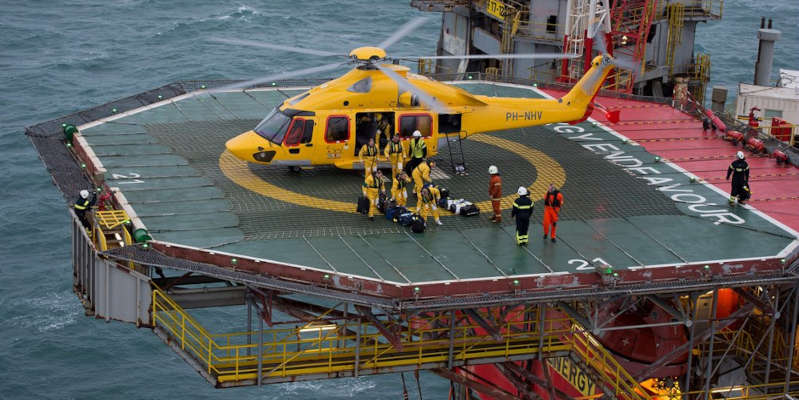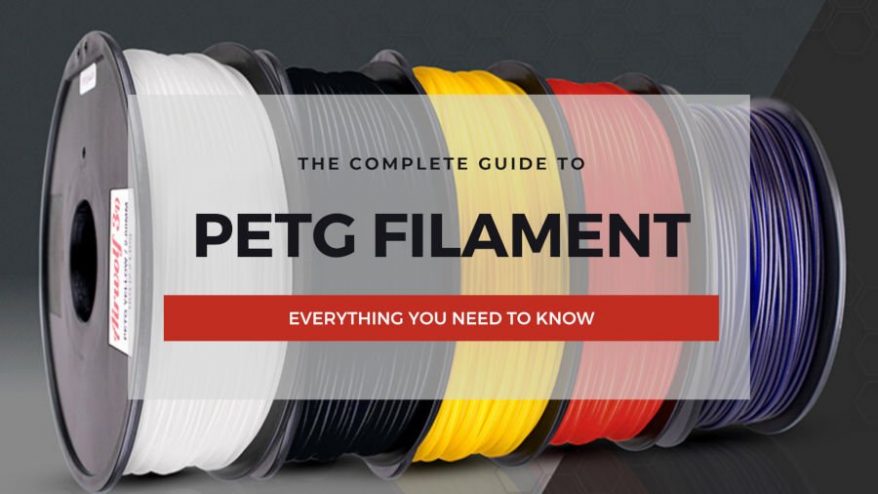
3 Ways the Oil and Gas Industry Uses 3D Printing


At 3DSourced we’ve covered everything 3D printing and 3D since 2017. Our team has interviewed the most innovative 3D printing experts, tested and reviewed more than 20 of the most popular 3D printers and 3D scanners to give our honest recommendations, and written more than 500 3D printing guides over the last 5 years.
Continued integration of 3D printing within the oil and gas industry has some very exciting outcomes in the near future. Significantly reduced operating costs, almost totally self-sustaining facilities, and oil rigs that build and maintain themselves!
So, if these developments are meant to be just around the corner, then how is 3D being used in the industry now?

The Oil and Gas Industry
The oil and gas industries are perhaps best known for the massive scale of their engineering, both in terms of size and cost. Power plants, drilling operations, and offshore oil rigs represent enormous amounts of money, assets, and people, to both manage and keep safe.
Adding to this, the industry can be volatile. Oil is a highly political and controversial commodity – many want to see it replaced by greener and more environmentally friendly options – and its price can fluctuate unpredictably due to international policies.
More relevant for us, however, are issues that arise from these power stations and oil rigs themselves. If anything goes wrong, or production is slowed or halted in any of these installations, then the downtime cost could hurt the company’s wallet dearly.
Because of this, any innovation that can improve reliability and safety is given significant amounts of research and attention here. To this end, it’s unsurprising that 3D printing has continued to see more and more integration across the oil and gas industry.
And the implications here aren’t subtle. As you’re about to see, 3D printing could radically change and improve upon many of the ways this industry does business.
1. Spare and Repairs
Using 3D printing to produce spare parts is hardly new. One of the first things most industries will experiment with is whether existing parts can be produced more efficiently with 3D printing. However, in the case of oil and gas, it’s worth explaining just how important it is to be well stocked with spare parts.
Running Costs
Large energy installations are incredibly expensive. Not only in terms of the cost of building, but also just the cost of operation.
For example, the industry publication “Reservoir Exploration and Appraisal 2013,” found that an oil drilling rig in the Gulf of Mexico can cost up to $800,000 to operate per day and take up to 150 days to fully complete excavate a well.
And this is just for an exploratory well. Additional installations and operations are needed to actually extract the oil, assuming that is, that the exploratory well actually finds any.
So, any malfunction in an installation, even for a day, can be incredibly expensive. This is amplified if the delay also impedes the rest of the extraction process.

Remoteness
Additionally, oil and gas installations commonly suffer from being installed in remote locations. Obviously, off-shore facilities are understandably remote, but even on-shore installations can be affected. Indeed, many energy-producing facilities are purposely built apart from urban or residential areas.
This remoteness means that even with good supply networks, getting equipment to sites can be slow. This is a problem considering that if a vital component fails, and spares aren’t on hand, then that facility will remain offline and generating costs until a replacement arrives.
The traditional method
The solution to this would seemingly be to just ensure that each facility is well stocked with spare parts, however that strategy comes with its own problems too, problems that 3D printing has offered a solution to. But before introducing the 3D printed method, let’s explore the problems it’s going to be solving.
In terms of cost, having a large collection of spare parts is useful, but expensive. It is also a very physically expensive solution. A large amount of space has to be reserved for storing spare parts that may never be needed.
Additionally, there remains the problem of moving these parts to where they are needed. Unless a facility happens to have a part on hand, then even if their company owns a replacement, it still needs to be moved to that location. And again, during this downtime the installation will be costing money.

3D Printing Spare Parts
What 3D printing offers is the ability to produce these components on demand. Using industrial 3D printers and metal 3D printing techniques such as Direct Metal Laser Sintering (DMLS) means that many installation components can be replicated.
In this way both issues are mitigated. Spares won’t need to be hoarded, and printing on-location means that parts simply won’t need to travel. Although not all components can currently be 3D printed, the list of available parts continues to grow.
Shell in Nigeria
An example of this approach in action came during Shell’s offshore operations in Nigeria. On their website, the energy company explained that a polymer seal covering on a mooring buoy needed to be replaced. However, the part was simply no longer in production.
Additionally, simply replacing the entire unit wasn’t an option either. The seal itself was part of a larger assembly, and would require complex, dangerous, and expensive heavy lifting to entirely replace.
So, instead, they tried a new approach. They explained that “the Nigerian team modelled the component with a 3D scanner from a local supplier… 3D printing reduced the final cost of the maintenance by 90% compared to a conventional replacement and it took merely 2 weeks to produce the parts.”

Could there be a more explicit case for 3D printing your spare parts on demand? But we must move on. So, moving away from simply recreating existing components, what else has 3D printing done for the industry?
2. Next Generation of Scale Models
Rapid prototyping is again another very common application of 3D printing, with the technology routinely used in the research and development process of many large industries. However, here, the process has also established itself as a way of significantly improving safety.
Let’s use miniaturized prototype models as an example. Although an increasingly common technique, the scale and complexity of oil and gas projects makes these 3D printed models especially valuable. Considering how expensive these installations are, and how dangerous construction accidents can be, it’s worth ensuring that they’re built right first time.
Read more: best 3D printers for miniatures
Whilst documenting the assembly of another buoy installation, Shell released a video discussing the benefits of these 3D printed models over conventional alternatives.
Traditionally, a 2D drawing was used to describe the installation. However, with the buoy being comprised of over 222 heavy foam blocks that had to be assembled in a specific sequence, there was perhaps room for an improved method.
“What we have done is we’ve actually used a 3D printer, and we created the model in 3D of the structure, and then a model of all 222 components of the foam blocks, so that we could then plan it, and make sure the sequence was right to ensure that we did it safely… Having a model like this in the design process really bridges the gap between design and fabrication. It’s already added value in understanding whether the dimensions are correct, and whether we have clashes or not. It’s a great tool to be able to plan the work, execute it, and anticipate the problems, and come up with a workaround before the process even starts.”
3. Novel Production
So far, we’ve seen how 3D printing is being used to support existing processes. But an emerging use of the technology is in novel production.
Rather than simply replicating a component with a 3D printer, Novel design studies instead redesign components to make them more effective. This practice is common within aerospace, where parts are continually redesigned using 3D printers in an attempt to make them lighter and stronger.
Although the use of 3D printing in these studies is not universal, the technology has already replaced and improved several oil and gas installation components.

APS Technology & EOS
One such tale of success came in 2018 with electromechanical manufacturer APS technology.
One of the products offered by APS are well drillers. These machines are used to cut boreholes through miles of rock, to eventually create oil wells. The machines are complex, with various systems installed to allow the drills to be literally steered onto the best path through the rock.
Additionally, the nature of their work means that they must withstand significant abuse. In their report, APS revealed that:
“aside from the obvious difficulties involved in cutting rock hundreds of feet under the earth, the pressurized fluid used to cool the drill head and flush away cuttings is highly abrasive, and rushes past very fast. This can wreak havoc not only on the down-hole systems, but also on many other types of drilling equipment, even destroying super tough Inconel and 17-4 stainless steel.”
Seeing these challenges as areas to improve in their design, APS began developing various ways of reducing the wear on their products. This prompted their experimentation with using 3D printing to upgrade their components.

The 3D Printed Drill
APS partnered with industrial 3D printing company EOS, where they used their DMLS 3D printers to print various components out of durable metal powders. As these new components were also made of stainless steel or Inconel, they are just as durable as conventionally built ones.
But by using 3D printing, APS was able to “build long-lasting parts in a short space of time… Create complex geometries that could not previously be manufactured,” and “parts that are far more space-efficient than their traditionally machined counterparts.”
So, although these new 3D printed components failed to be significantly more durable, they didn’t need to be. Instead, they were cheaper, simpler to assemble, and as we covered in an earlier point, could simply be re-printed and replaced on demand once worn out.
APS released what they felt were the results of their collaboration:
“By using EOS technology, APS has reduced the part count in a drilling assembly from four separate components to just one. DMLS is also creating cost savings in the company’s extensive machine shop, where jigs and fixtures that once took days or even weeks to machine can now be printed, unattended, overnight. Aside from the advantages APS has seen in part-count reduction and novel component shapes, designers are finding that product development cycles are substantially shorter.”
The Future of 3D Printing Within Oil and Gas
Seemingly, the industry seems to be mostly experimenting with how 3D printing can make their installations more autonomous. This makes sense too, after all, having to support remote facilities has been an unavoidable hurdle for the industry. Until now at least.
Using 3D printing to produce spare parts and develop new prototypes is helpful. But what about the next step for novel designs? What happens when instead of some components being made on-demand, all of them were?
Moving into speculation, it’s feasible that the continued use of 3D printing could lead to entirely autonomous facilities. Imagine a system where instead of relying on extensive supply lines, each installation is instead only supplied with raw materials, which it then uses to 3D print its own components on-demand.
Rather than expensive and helicopter-reliant oil rigs, could the future see fleets of giant self-sustaining oil extracting robots?

Well, perhaps that is going too far. But what is certain is that the immediate future is likely to see 3D printing become the dominant way new novel designs and components are produced across the industry.



















